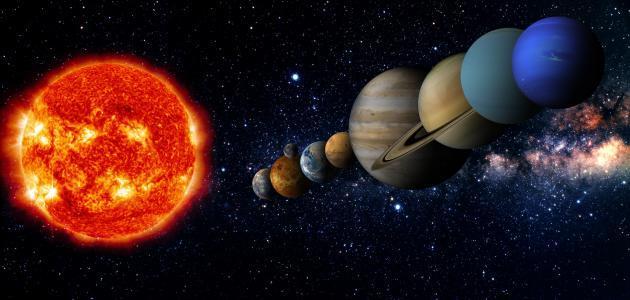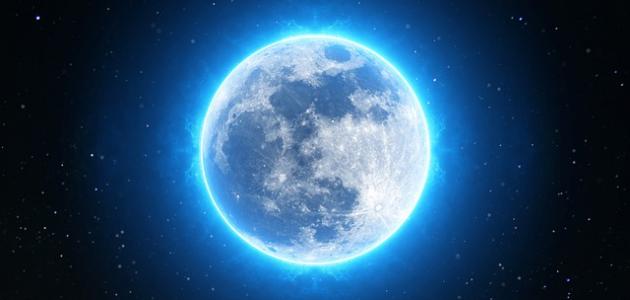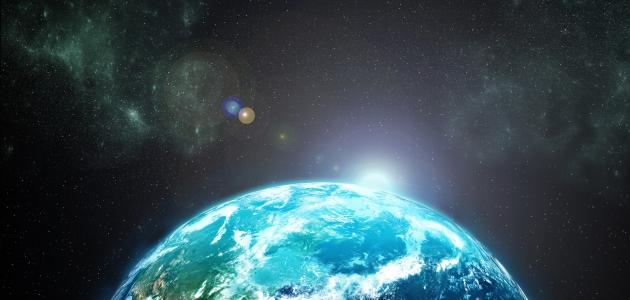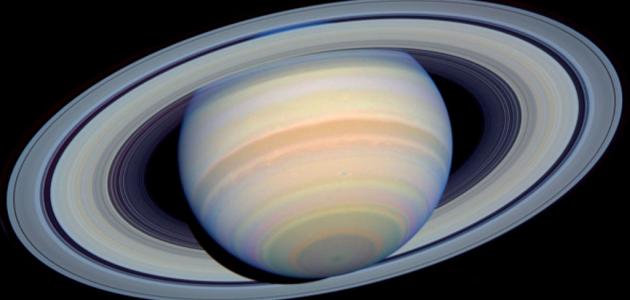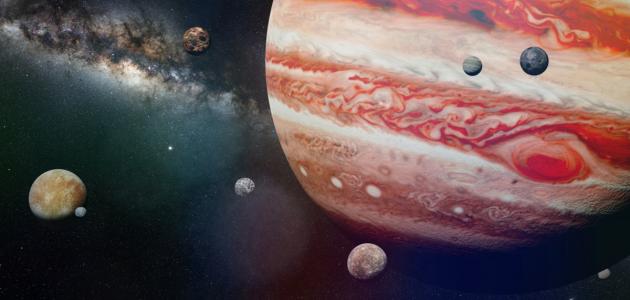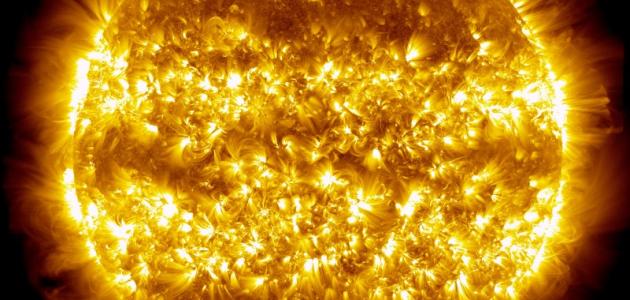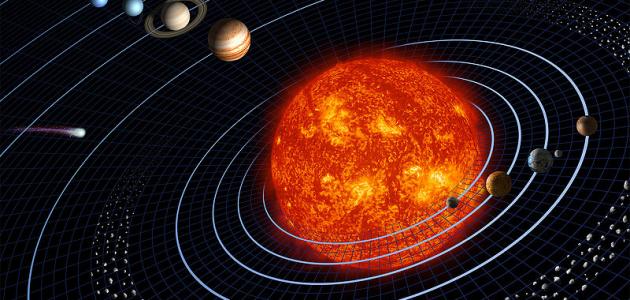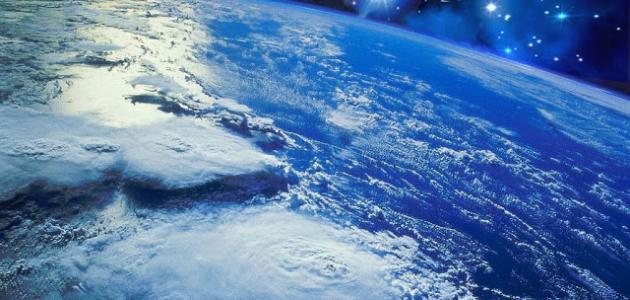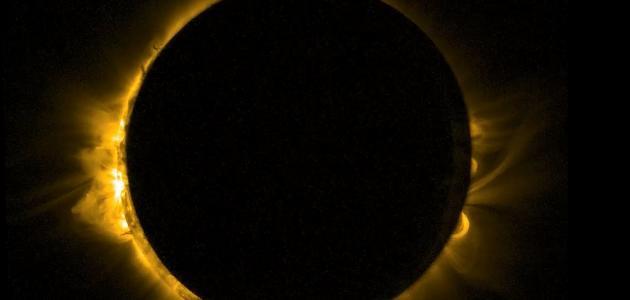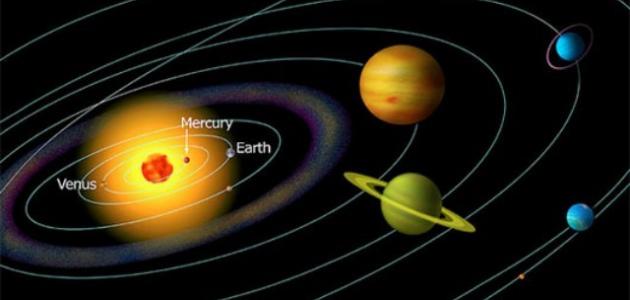number of planets
There are eight planets in the solar system, revolving around the sun, namely: Mercury, Earth, Jupiter, Saturn, Uranus, and Neptune. In 2006, a new planet, Pluto, was included, making it nine planets. Relatively large orbiting around the sun, or around another star, and there are four rocky planets, namely: Mercury, Venus, Earth, Mars, and giant planets, rich in hydrogen, namely: Jupiter, Saturn, Uranus, Neptune, and a snowy planet, which is Pluto .
planets
Mercury
In English: Mercury, which is the closest planet to the sun, and it is slightly larger than the moon on the planet Earth, and its temperature on the side of the sun may reach about 450 degrees Celsius, and on the night side it drops to hundreds of degrees below the freezing point, and Mercury does not have any cover to absorb meteorite impacts, It has a diameter of 4.878 kilometers, and it is considered the smallest planet in the solar system, and it revolves a full cycle around the sun within 88 days.
Flower
In English: Venus, the second closest planet to the sun, and it is a very hot planet, hotter than Mercury, similar in size and structure to Earth, and contains a thick atmosphere, with a diameter of 12.104 km, and it takes 224.7 days to revolve around the sun a full cycle, and the equivalent of 243 days from The Earth revolves around the Sun, which means that one day on Venus is equivalent to 243 Earth days.
Read also:Does the earth rotateEarth
English: EarthIt is the third planet close to the sun, and it is the only planet in which there is life, as it contains an atmosphere rich in nitrogen and oxygen necessary for life. 467 km.
Mars
In English: MarsMars is considered the fourth planet from the sun, and it is considered a cold, dusty, reddish planet, with a diameter of 6.787 km, and its size is half the size of the Earth, and there is no water in it due to the low pressure, and it is similar to the planet Earth in its rocky nature, and it contains mountains and valleys.
Purchaser
In English: JupiterIt is the largest planet in the solar system, and the fifth planet from the sun, and is considered a gaseous planet, as it consists mostly of hydrogen and helium, and Jupiter contains a strong magnetic field, and with dozens of moons, with a diameter of 139.822 km.
Saturn
In English: SaturnIt is the second largest planet in the solar system after Jupiter, and it is a gaseous planet like Jupiter, but it contains nine continuous rings, and it is considered the most beautiful planet in the solar system, and it consists of hydrogen and helium, and its diameter is nine times the diameter of the planet Earth, but it weighs an eighth Earth mass, and has 150 moons.
Read also:How do earthquakes happen?Uranus
In English: UranusIt is the seventh planet farthest from the sun, and it is a giant planet, with a diameter of 51.120 kilometers, and its size is the same as that of Neptune, and it is distinguished by its blue and green color, due to the presence of methane in its atmosphere, and it has many moons, and it is also the third largest planet in the solar system, which is The coldest planet, with temperatures reaching -224 degrees Celsius.
Read also:Earth-like planetNeptune
In English: NeptuneIt is a planet that Galileo considered a fixed star for the first time, as he used mathematical predictions to discover it, and it is about 2.8 billion miles away from the sun, and it completes its cycle around it every 164.8 years from Earth, and it has 14 known moons, and its atmosphere consists of hydrogen and helium.
Pluto
English: PlutoIt is the ninth planet, and it is also called the dwarf planet. It is smaller than the moon on Earth, with a diameter of 2.301 km, and it orbits every 248 Earth years.
